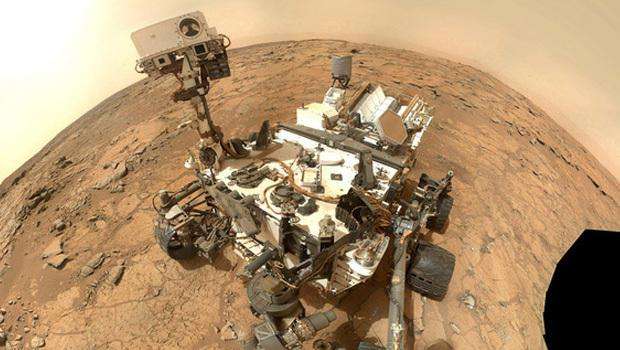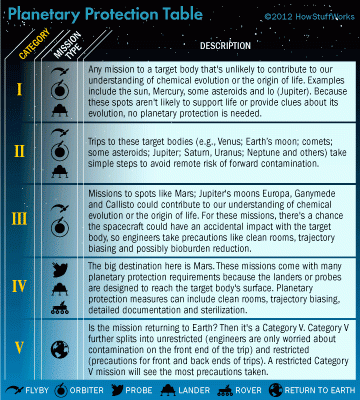The puzzle of planetary protection

The recent announcement by NASA confirming the presence of liquid water on Mars pulls planetary protection into the spotlight and is causing some serious head-scratching in the scientific community. On the one hand, having existing liquid water on the Red Planet is a cause for wonder, excitement, and a strong desire to investigate it in a great deal more depth to look for the possibility of life. On the other hand, there is the dilemma of protecting a potential biosphere from contamination from Earthly bugs. As keen as the Curiosity mission team is to take advantage of the rover to have a much closer look at recurring slope lineae (RSL), the rover itself is just not clean enough.
"There will be heated discussions in the next weeks and months about what Curiosity will be allowed to do and whether it can go anywhere near the RSLs," said Andrew Coates of University College London's Mullard space science laboratory. "Curiosity now has the chance, for example, to do some closer up, but still remote, measurements, using the ChemCam instrument with lasers, to look at composition. I understand there is increasing pressure from the science side to allow that, given this new discovery."
It is a conundrum that is not new. If you send a spacecraft with the intention of finding life, how do you know if what you found was not brought there by the very thing you sent? This is known as 'forward contamination'. There in fact rules set in place by a worldwide organization called COSPAR (Committee on Space Research), that anything sent into space are assigned to one of five categories in increasing order of risk. Naturally there are subcategories.
Curiosity is classed as Type IVb, whereas for it to take any samples from RSL, it would need to be Type IVc, thus an extra level of cleaning would be necessary. The rover can use instruments such as ChemCam to observe the flows remotely. Under COSPAR rules it cannot be allowed close enough to take direct samples. In fact there was a mistake made when sending the rover to Mars when some drill bits were not sent through the final stage of cleaning, whilst still very clean, procedure was not strictly adhered to.

Some scientists are now arguing that the level of decontamination is not only a lengthy procedure, but also expensive and pointless as microbes from Earth will already have landed on Mars via asteroid strikes thus be present already.
"We know there's life on Mars already because we sent it there," John Grunsfeld, the associate administrator of NASA's Science Mission Directorate, said during a press conference last week.
In the paper, called The Overprotection of Mars, co-authors Alberto G. Fairén of the Department of Astronomy, Cornell University and Dirk Schulze-Makuch of the School of the Environment, Washington State University argue that the level of planetary protection needed to go to 'sensitive areas' would be prohibitively expensive to achieve.
In the paper, called The Overprotection of Mars, co-authors Alberto G. Fairén of the Department of Astronomy, Cornell University and Dirk Schulze-Makuch of the School of the Environment, Washington State University argue that the level of planetary protection needed to go to 'sensitive areas' would be prohibitively expensive to achieve.
"If Earth life cannot thrive on Mars, we don't need any special cleaning protocol for our spacecraft; and if Earth life actually can survive on Mars, it most likely already does, after four billion years of meteoritic transport and four decades of spacecraft investigations not always following sterilization procedures," Fairén says. "Planetary protection policies are at least partly responsible for the lack of life-hunting Mars missions since Viking, as they impose very stringent requirements for sterilization of the spacecraft which, in my opinion, are not necessary," he adds.
You can do your best to clean your spacecraft, but you simply cannot eliminate it entirely. It is in fact possible that the high levels of radiation and UV light Curiosity has been exposed to, may have sterilized it enough; however is debatable as, in the process of cleaning the spacecraft, the decontamination team may in fact have inadvertently allowed the few organisms tough enough to survive the cleaning process, the trip and Mars' extreme environment to adapt and live on the planet.
Doubtlessly, the debate will continue to rage on, particularly with the upcoming Mars 2020 rover mission in mind. It will certainly be fascinating to see what additional revelations Curiosity may reveal to help scientists solve puzzles such as this.
Source: Universe Today





















